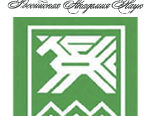Крижановский А.А.
Выбор оптимального радиуса кластеризации на картах катастроф
Keywords: earthquake; volcanic eruption; clustering; Wikidata; SPARQL
Wikidata contains data on volcanoes and earthquakes, enabling spatial analysis. To find the relationship between them, they need to be grouped into clusters. Several approaches to choosing the optimal clustering radius are considered. Varying the clustering radius revealed that (1) 90 km is the optimal distance for detecting pairwise interactions (maximizing mixed clusters containing both volcanoes and earthquakes), and (2) 127 km is the stability threshold of the cluster structure (exceeding it leads to merging artifacts). Using SPARQL queries and Python scripts, maps were generated to visualize potential connectionsbetween eruptions and seismic events. The analysis shows that Wikidata currently lacks sufficient information on volcanic eruption dates, although the number of “volcanic eruption” objects with date properties has increased severalfold over three years. The study highlights both the potential and current limitations of Wikidata for geoscientific research. The study confirms that crowdsourced databases can complement traditional scientific resources in researching global geophysical patterns.
Indexed at RSCI, RSCI (WS)






